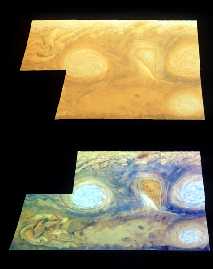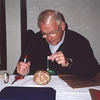This image of Jupiter's white ovals BC and DE was taken by the Galileo spacecraft
Click on image for full size
JPL/NASA
Other White Ovals of Jupiter
White ovals are found all over Jupiter, not just where the classic ovals were
born. See if you can find some of the others for yourself in pictures in the image archive. There are so many white ovals that they don't all have names. The other white ovals near the famous three are named WO1, WO2, and WO3. You can see these in the white oval
train.
Just like the Great Red Spot, clouds inside a white oval spin around a center point. This is just like what a hurricane or tornado on Earth does.
White ovals can last a long time, 40 years or more. But in the end, they shrink down in size until they fade away, or they merge together. It is not often that ovals merge, however. Most often they come close , then push each other away.
Scientists use the motions and activities of these white ovals to understand more about the weather of Jupiter.
You might also be interested in:
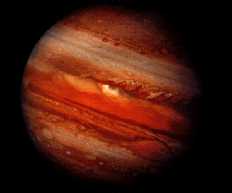
The giant planets have definitely changed since their formation. But how much remains to be seen. Most of the original air of the giant planets remains in place. (The earth-like planets lost most of their
...more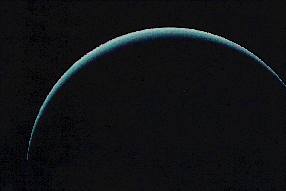
The mesosphere of Jupiter is a region of balance between warming and cooling. That essentially means that nothing happens there. Except for diffusion, the atmosphere is still. Upper reaches of the atmosphere,
...more
As on Earth, the atmosphere of Jupiter consists of a troposphere, stratosphere, mesosphere, and thermosphere. The troposphere is the region where the visible clouds are to be found. The stratosphere, as
...more
The stratosphere of Jupiter is a region of warming as determined by infrared measurements of methane (CH4) in the region. Like the troposphere, the stratosphere is warmed by the sun, warmed by Jupiter's
...more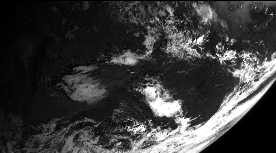
The troposphere of Jupiter is where the clouds are. Clouds form in regions of strong atmospheric motion, when condensation takes place. The troposphere is the region rapidly stirred by vertical motions.
...more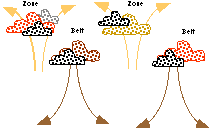
On Jupiter, the winds in the belts and zones blow first in one direction, then in the opposite direction. Wind blows east in a belt, and west in a zone. The clouds rise up in a belt, and drop down in a
...more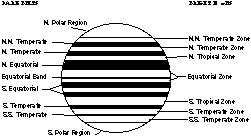
The striped cloud bands on Jupiter are certainly not as straight as they appear to be in this picture! The picture shows that the striped pattern is divided into belts and zones. The belts and zones of
...more


